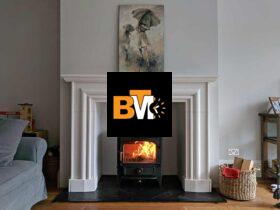The integration of wooden beams into architectural designs confers a touch of elegance and robustness that few other materials can match. Within the sphere of modern architecture, the incorporation of wooden elements, specifically beams, remains a choice that seamlessly blends traditional aesthetics with contemporary necessities. This blend has the power to evoke both warmth and modernity, creating living and working spaces that are as visually appealing as they are structurally sound.
The Historical and Contemporary Value of Wooden Beams
In historical contexts, wooden beams provided the backbone for structures, a testament to their enduring strength and reliability. Today, these wooden features continue to hold a place of prestige within the architectural canon, finding their way into an array of modern constructions. The appeal of wooden beams is not merely in their rustic charm, but also in the innate characteristics of wood as a material which promotes sustainability and adaptability.
The Structural Benefits of Wooden Beams
Wood, as a building material, carries a multitude of structural benefits. It has a high strength-to-weight ratio, which ensures that despite their relatively light nature, wooden beams offer substantial support to a structure. This balance of weight and support is integral in achieving broad spaces and ambitious architectural designs without necessitating excessive support systems.
Wooden Beams and Sustainability
One cannot discuss modern architecture without acknowledging the critical role of sustainability. Wooden beams are a favourable choice for green construction due to wood’s status as a renewable resource. Utilized in a responsible manner, incorporating professionally sourced and treated wooden beams can reduce the carbon footprint of a building project.
Aesthetic Versatility
The aesthetic applications of wooden beams in modern design mirror their versatility. Be it in a chic urban loft or a minimalist corporate office, wooden beams can be stylized to complement a myriad of architectural visions. They introduce an element of nature into any environment, providing a grounding contrast to the synthetic materials commonly used in contemporary buildings.
Wooden Beams in Residential Architecture
In residential constructions, wooden beams often feature prominently in the creation of inviting atmospheres. They lend a sense of solidity and comfort to living spaces, where the interplay of light and wood grain can produce a calming effect. Additionally, wooden beams can be crafted to enhance the acoustic properties of a room, making them especially valuable in home-designed with sound quality in mind.
Commercial Spaces and Wooden Beams
The same principles that make wooden beams appealing in residential designs also apply to commercial spaces. In a commercial setting, wooden beams can imbibe an aura of prestige and warmth, necessary components for business environments aiming to impress and welcome clients.
Craftsmanship and Customization
The craftsmanship involved in selecting, shaping, and installing wooden beams is another aspect that elevates their status in modern architecture. Technological advancements have allowed for high levels of customization, ensuring that each beam can be tailored to the specific architectural needs and aesthetic preferences of a project.
The Role of Wooden Beams in Architectural Identity
Architectural identity, or the unique signature that differentiates one building from another, is often supported by key design elements like wooden beams. In modern architecture, where the pursuit of character and individuality is vital, the strategic use of beams can contribute significantly to a building’s identity.
Preservation of Historical Integrity with Modern Techniques
Renovation projects that aim to preserve historical integrity while instilling modern amenities rely heavily on wooden beams. They act as a bridge between the old and the new, helping to maintain the nostalgic essence of a structure while bringing its facilities up to current standards.
Challenges in Incorporating Wooden Beams
Despite their many virtues, the incorporation of wooden beams into modern architecture is not without its challenges. Considerations such as load-bearing limitations, susceptibility to environmental factors, and compatibility with other materials must be addressed early in the design process to prevent structural complications.
Advances in Wooden Beam Technology
Thankfully, advances in wood treatment and construction methods have improved the durability and functionality of wooden beams. These improvements have opened the door to bolder architectural pursuits without compromising the integrity of the wooden elements.
Conclusion: Wooden Beams as Time-Honoured Elements in Modern Designs
In conclusion, wooden beams retain their place as both functional and decorative components that enrich modern architectural designs. The melange of tradition and innovation that these elements bring to buildings is unrivalled. Through thoughtful integration and skilled craftsmanship, wooden beams continue to uphold their legacy, reinforcing their timeless elegance in the architectural world.
Whether they are employed to echo the grandeur of historic edifices or to carve a new aesthetic within contemporary spaces, wooden beams are a testament to the harmonious coexistence of past and future. Their ability to adapt, endure, and inspire remains as relevant today as it ever was, securing their role in modern architecture for generations to come.







Leave a Reply